Collection of materials relating to neuro-ophthalmology as part of the Neuro-Ophthalmology Virtual Education Library.
NOVEL: https://novel.utah.edu/
TO
- NOVEL726
| Title | Creator | Description | Subject | ||
|---|---|---|---|---|---|
| 151 |
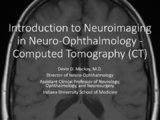 |
Computed Tomography (CT) | Devin D. Mackay, MD | Explantation of computed tomography (CT) examinations. | Computed Tomography (CT) |
| 152 |
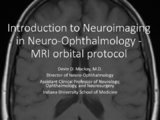 |
MRI Orbital Protocol | Devin D. Mackay, MD | Description of the MRI orbital protocol. | MRI Orbital Protocol |
| 153 |
 |
MR Angiography (MRA) | Devin D. Mackay, MD | Explanation of using MR angiography in examinations. | MR Angiography (MRA) |
| 154 |
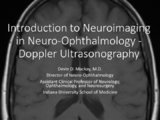 |
Doppler Ultrasonography | Devin D. Mackay, MD | Explanation of using doppler ultrasonography in examinations. | Doppler Ultrasonography |
| 155 |
 |
CT Angiography (CTA) | Devin D. Mackay, MD | Explanation of using computed tomography angiography (CTA) in examinations. | CT Angiography (CTA) |
| 156 |
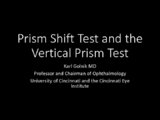 |
Prism Shift Test and the Vertical Prism Test | Karl C. Golnik, MD | Explanation of how to do the prism shift test and the vertical prism test. | Prism Shift Test; Vertical Prism Test |
| 157 |
 |
Functional MRI | Devin D. Mackay, MD | Explanation of using functional MRI in examinations. | Functional MRI |
| 158 |
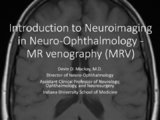 |
MR Venography (MRV) | Devin D. Mackay, MD | Explanation of using MR venography (MRV) in examinations. | MR Venography (MRV) |
| 159 |
 |
CT Venography (CTV) | Devin D. Mackay, MD | Explanation of using computed tomography venography (CTV). | CT Venography (CTV) |
| 160 |
 |
Positron Emission Tomography (PET) | Devin D. Mackay, MD | Explanation of using positron emission tomography (PET) in examinations. | Positron Emission Tomography (PET) |
| 161 |
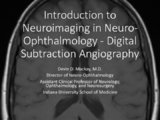 |
Digital Subtraction Angiography | Devin D. Mackay, MD | Explanation of using digital subtraction angiography in examinations. | Digital Subtraction Angiography |
| 162 |
 |
Stereo Acuity Testing for Non-physiologic Visual Loss | Walsh and Hoyt Clinical Neuro-Ophthalmology, 6th Edition; Omar Ozgur, MD; Rudrani Banik, MD; François-Xavier Borruat | Description of stereo acuity for non-physiologic visual loss. | Stereo Acuity Testing; Non-physiologic Visual Loss |
| 163 |
 |
OKN Testing for Non-physiologic Visual Loss | Walsh and Hoyt Clinical Neuro-Ophthalmology, 6th Edition | Description of OKN testing for non-physiologic visual loss. | OKN Testing; Non-physiologic Visual Loss |
| 164 |
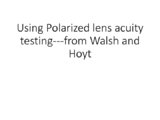 |
Using Polarized Lens Acuity Testing | Walsh and Hoyt Clinical Neuro-Ophthalmology, 6th Edition | Description of using a polarized lense for acuity testing. | Polarized Lens; Acuity Testing |
| 165 |
 |
Proprioception Testing for Non-physiologic Visual Loss | Walsh and Hoyt Clinical Neuro-Ophthalmology, 6th Edition | Description of proprioception for non-physiologic visual loss. | Proprioception Testing; Non-physiologic Visual Loss |
| 166 |
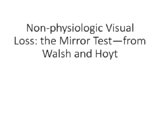 |
Mirror Test for Malingering | Walsh and Hoyt Clinical Neuro-Ophthalmology, 6th Edition | Description of the mirror test. | Mirror Test; Malingering |
| 167 |
 |
Monocular Hemianopia | Walsh and Hoyt Clinical Neuro-Ophthalmology, 6th Edition | Description of testing for a non-physiologic cause of a monocular hemianopia. | Monocular Hemianopia |
| 168 |
 |
Testing Lacrimal Function | Walsh and Hoyt Clinical Neuro-Ophthalmology, 6th Edition | Description of testing lacrimal function. | Lacrimal Function |
| 169 |
 |
Corneal Staining | Sovik De Sirkar, MSIII; Ore-ofe Adesina, MD | Description of the corneal staining technique. | Corneal Staining |
| 170 |
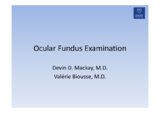 |
Fundus Photography | Devin D. Mackay, MD; Valérie Biousse, MD, | Explanation of using fundus photography in examinations. | Fundus Photography |
| 171 |
 |
Ocular Fundus Examination | Devin D. Mackay, MD; Valérie Biousse, MD | Explanation of using the direct ophthalmoscope in examinations. | Direct Ophthalmoscope |
| 172 |
 |
Slit Lamp Binocular | Devin D. Mackay, MD; Valérie Biousse, MD | Description of the slit lamp binocular examination. | Slit Lamp Binocular |
| 173 |
 |
Indirect Ophthalmoscope | Devin D. Mackay, MD; Valérie Biousse, MD | Explanation of using the indirect ophthalmoscope in examinations. | Indirect Ophthalmoscope |
| 174 |
 |
Magnetic Resonance Imaging (MRI) | Devin D. Mackay, MD | Explanation of using magnetic resonance imaging (MRI) in examinations. | Magnetic Resonance Imaging (MRI) |
| 175 |
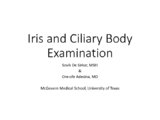 |
Iris and Ciliary Body Examination | Sovik De Sirkar, MSIII; Ore-ofe Adesina, MD | Description of the iris and ciliary body examination. | Iris; Ciliary Body Examination |
